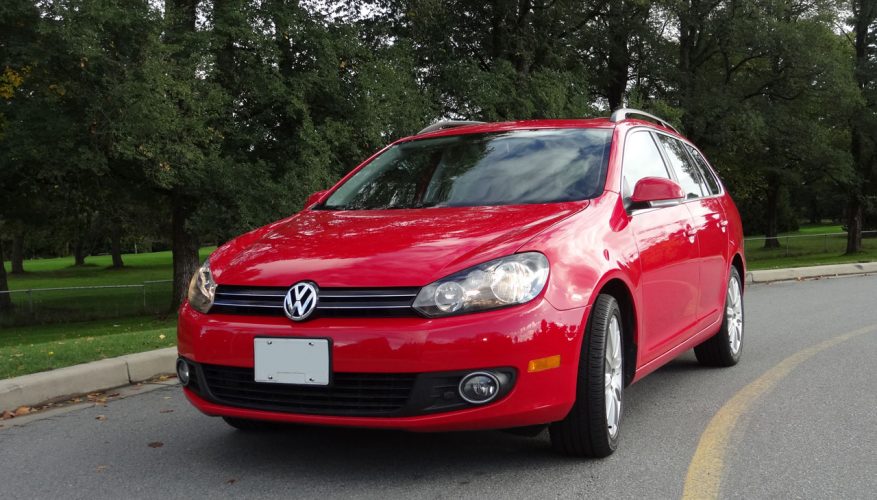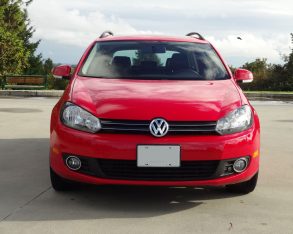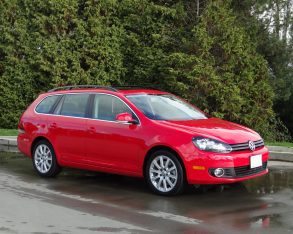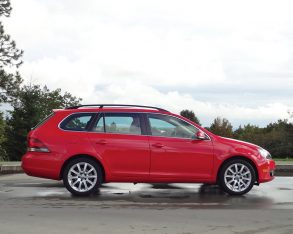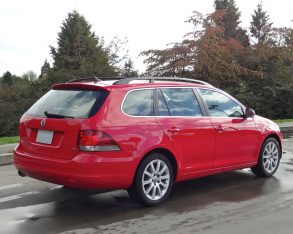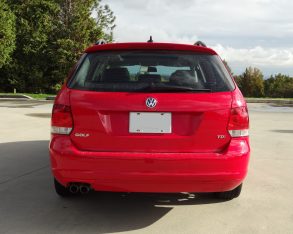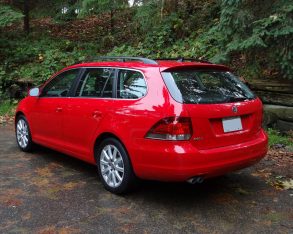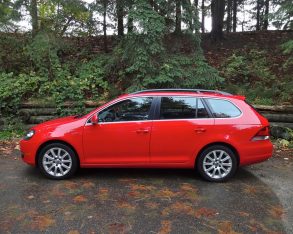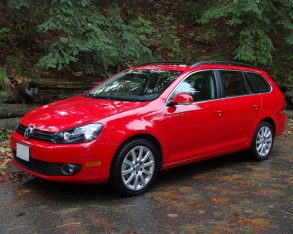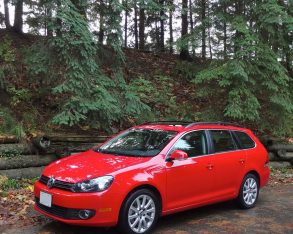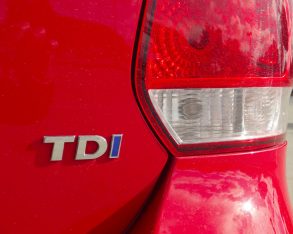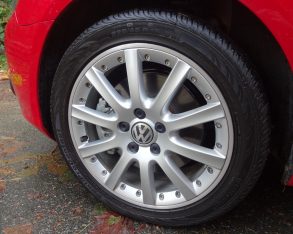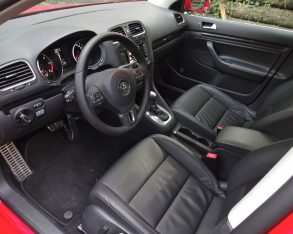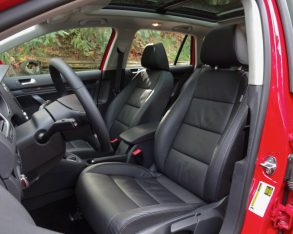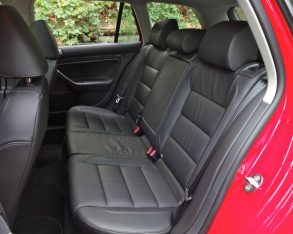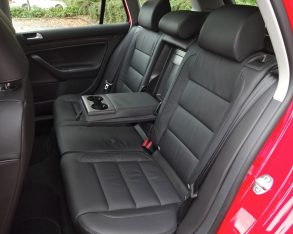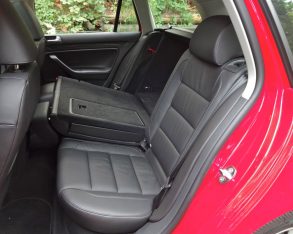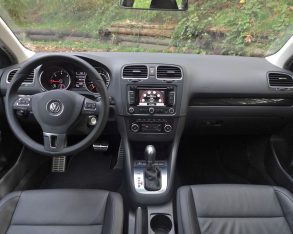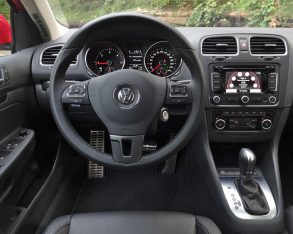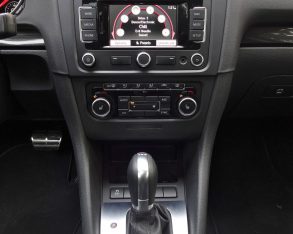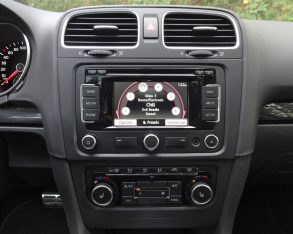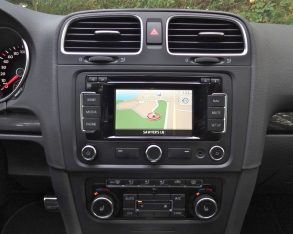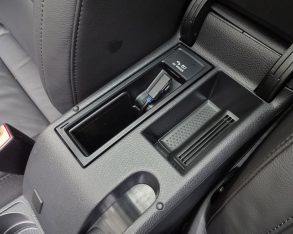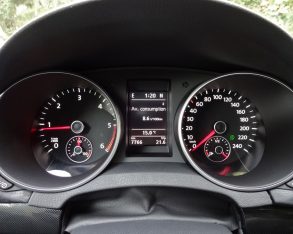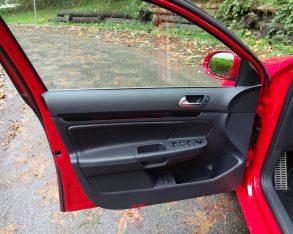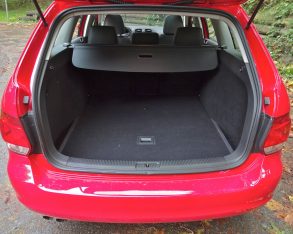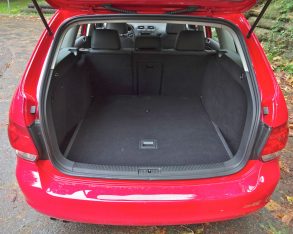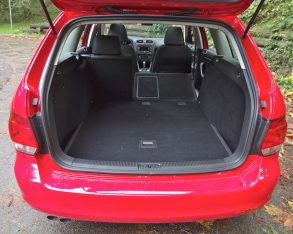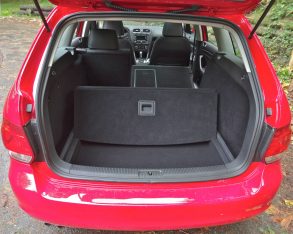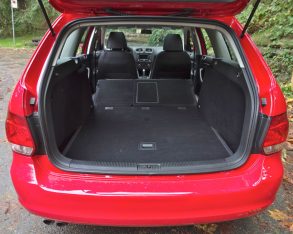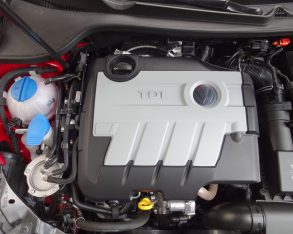 |
| Photo: Simon Hill, Canadian Auto Press |
For car shoppers seeking a compact, decent-handling family hauler that still retains a sporty, hip attitude there’s really nothing else out there quite like the Volkswagen Golf Wagon. It has as much (or more) room inside than most compact crossovers, but it sits lower and handles with much of the taut competence of its famous GTI hot-hatch sibling. Order up the Golf Wagon with the available TDI diesel engine and it offers phenomenal fuel economy to boot, comparable
 |
| Photo: Simon Hill, Canadian Auto Press |
For 2015 Volkswagen is introducing the next-generation Mk7 Golf to the market, but while the hatchback arrived on our shores in late 2014, the Mk7 Golf SportWagen won’t be here until the first quarter of 2015. In the meantime, in typical Volkswagen fashion, the German maker is sending off the last of the Mk6 Golf Wagons with an enticing Wolfsburg Edition trim option and a couple of previously unavailable colours that include Toffee Brown Metallic and my test car’s Tornado Red. Why wait for the next-generation Golf SportWagen – which judging by the hatchback pricing looks like it’ll be slightly more expensive than the current Golf Wagon – when you can pick up a nicely-loaded current-generation Wolfsburg Edition for somewhere between $29,070 (including the $1,395 destination fee) for the manual gasoline-powered car and $32,770 for the DSG automatic equipped TDI
 |
| Photo: Simon Hill, Canadian Auto Press |
In Wolfsburg Edition trim, nicely loaded means the Golf Wagon comes with special 17-inch alloy wheels, leather upholstery, 10-speaker audio with satellite radio and navigation, a panoramic sunroof, keyless entry, a leather-wrapped steering wheel and gear knob, alloy pedals, dual-zone electronic climate control, fog lights, eight-way adjustable driver’s seat with power recline, and a few more things beside (this includes Wolfsburg badging that wasn’t actually installed on my test car, but which I later learned was likely hiding in the glovebox and would be installed by the dealer in a couple of minutes flat).
It’s a pretty nice bundle of equipment at a price less than Highline trim, but there are a few notable omissions: There’s no rearview camera, no automatic headlights,
 |
| Photo: Simon Hill, Canadian Auto Press |
In most other respects, the interior of the Golf Wagon is very well executed, if perhaps a little overly restrained. The dash is soft-touch while the door uppers use quality-looking rigid plastic with a resilient outer skin (in contrast, the 2015 Golf 5-door
 |
| Photo: Simon Hill, Canadian Auto Press |
Up front I found the firm, supportive leather-upholstered seats to be a perfect fit for my five-foot-eleven frame, with plenty of available legroom and decent elbowroom. The back seat is a little more compact: I found it to have plenty of headroom and adequate legroom, but because the seat squab is quite low it meant there was no support under the front of my thighs. On the bright side, the back seat fits most child seats with relative ease. For grown-up backseat passengers there’s a fold-down central armrest with a pair of built-in cupholders.
In
 |
| Photo: Simon Hill, Canadian Auto Press |
Under the hood, the Golf Wagon comes with a choice of either a 2.5-litre gasoline engine that delivers 170 horsepower and 177 lb-ft of
 |
| Photo: Simon Hill, Canadian Auto Press |
Transmission choices with the gasoline engine include either a five-speed manual transmission or a conventional six-speed automatic for an extra $1,400. The TDI diesel comes paired with either a six-speed manual or a six-speed DSG automatic (the TDI normally carries a $2,800 price premium but the Wolfsburg Edition whittles this down to $2,300; the DSG automatic adds a further $1,400 to the price).
My test car was fitted with the TDI diesel, and all other things being equal I think this is the preferred engine for the Golf Wagon. Much has been made of the fuel economy advantages offered by the diesel, and I managed about 8.6 L/100km in the city and 5.9 on the highway while driving the DSG-equipped Golf Wagon TDI, which
 |
| Photo: Simon Hill, Canadian Auto Press |
The TDI offers more to appreciate than just excellent fuel economy, however: There
 |
| Photo: Simon Hill, Canadian Auto Press |
Choose the manual transmission and the diesel’s torque advantage means you can accelerate briskly from traffic lights without incurring a massive fuel economy penalty, and it also means you’re almost never caught in too high a gear, making both city driving and highway passing a snap.
Choose the DSG automatic and the diesel advantage brings out the best in Volkswagen’s direct, quick-shifting marvel of a gearbox: The DSG tends to seek the
 |
| Photo: Simon Hill, Canadian Auto Press |
Whichever engine you choose, Volkswagen’s Golf Wagon competes indirectly against a diverse array of rivals, including compact hatchbacks such as the Hyundai Elantra GT and Mazda3 Sport, compact crossovers like the Honda CR-V and Ford Escape, and tall wagons (or is that small minivans?) like the Kia Rondo and Mazda5. Select the TDI diesel and the Golf Wagon becomes a serious contender against hybrids such as Toyota’s Prius V and Ford’s C-Max. What the Golf Wagon offers that none of its competitors can match is its uniquely well-rounded personality, with hatchback-humbling cargo capacity, crossover-conquering handling, tall wagon-trumping style, and hybrid-humiliating driver engagement. For those who expect their family car to cover all bases the Golf Wagon is tough to beat.
©(Copyright Canadian Auto Press)



